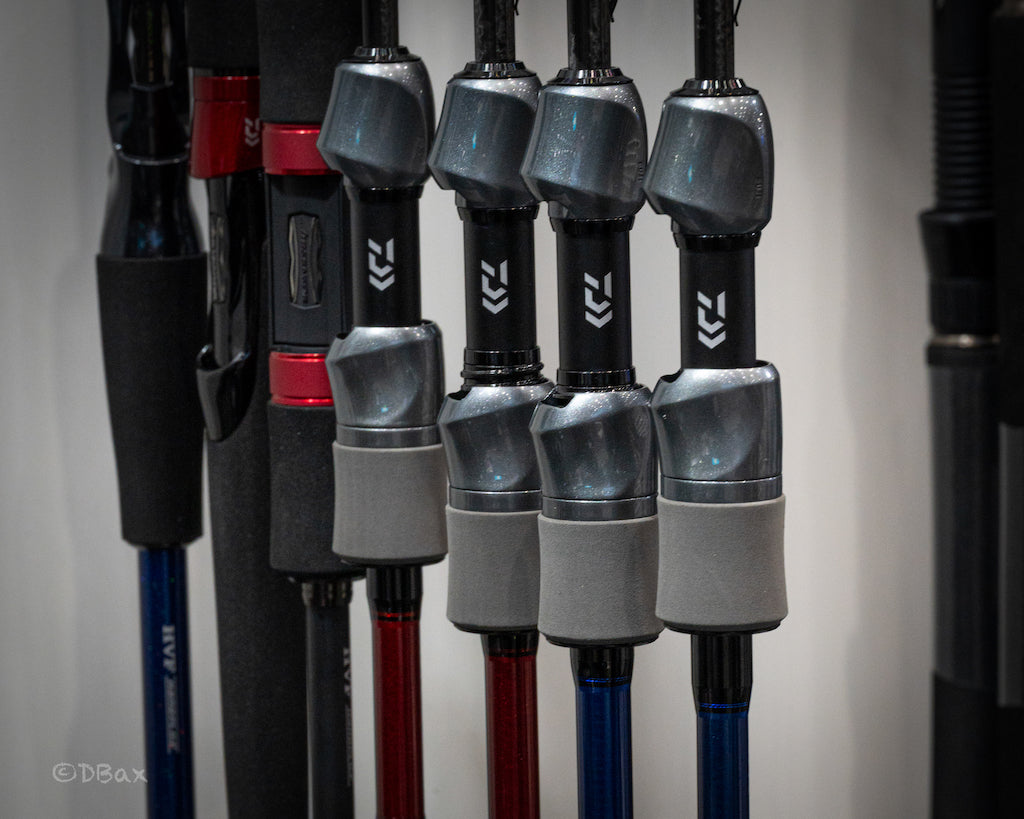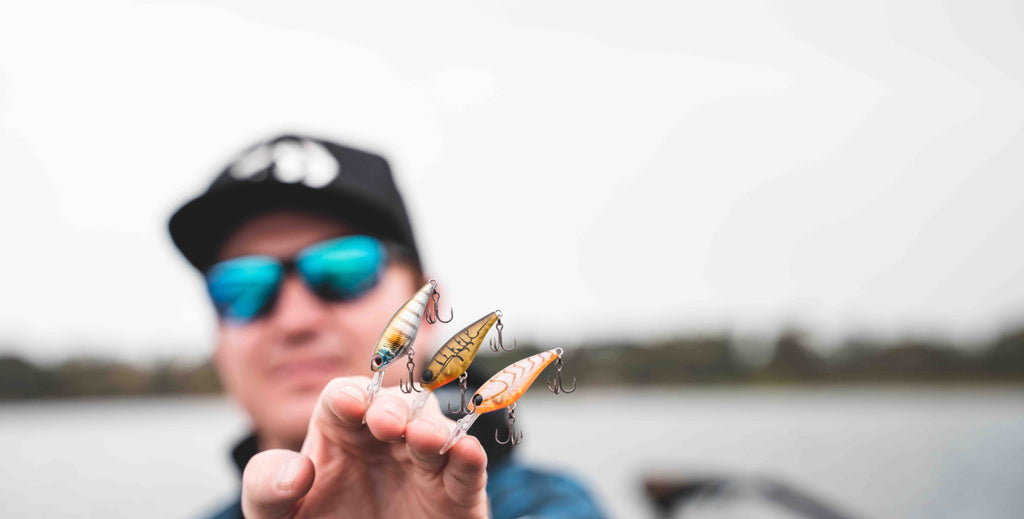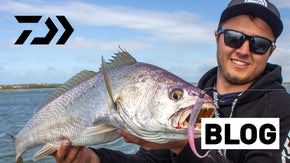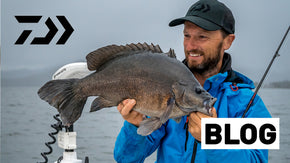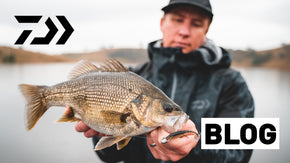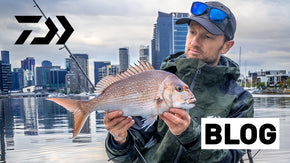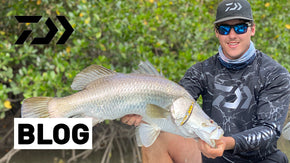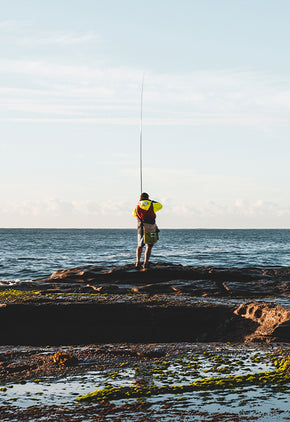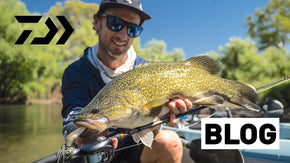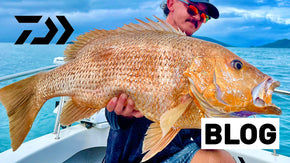Posted 22th September 2023
How to Catch Rock Blackfish
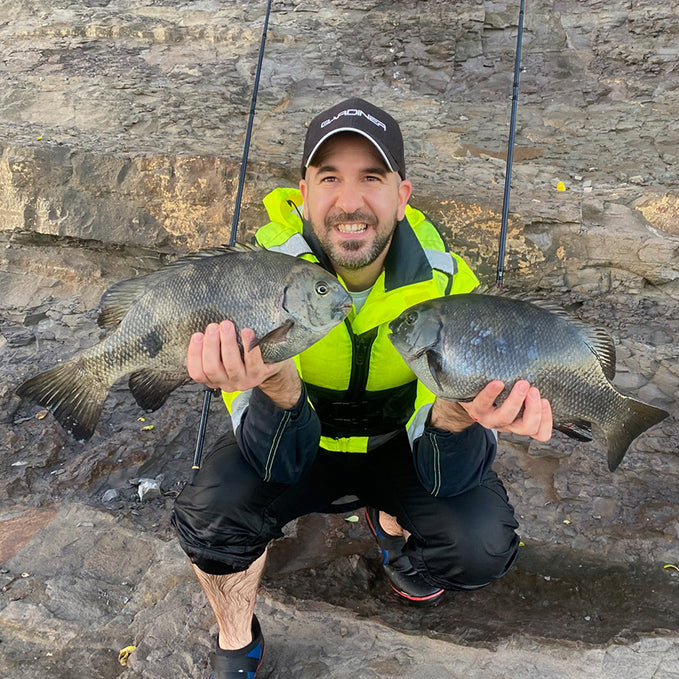

By Alex Bellissimo
The next few months are prime time for the mighty rock blackfish. If you are a rock fisher and willing to venture on the ocean rocks this species is the one fish that will test you in many ways. The live in tough terrain like under large, massive sunken boulders, and under ledges like a lot of the territorial species you encounter off the ocean rocks. The rock blackfish, aka black drummer or pigs, distribution is from the north coast of NSW to approx. south of Eden.
They are a hard fighting fish and for anglers that have encountered them have found there are often quite aggressive with the bites being quit sharp and hard. A sharp bite will be following by the rod tip loading up often fast, followed by powerful lunges, with the tail beat of the fish being transmitted through the rod making it obvious that you are on to a punchy, fighting fish that wants to swim hard back to its home under a boulder or ledge. Unfortunately to the unaware you will learn the hard way if you don’t have the right gear set up for this species especially when they get well over the 45cm range. Let’s take a look at the tackle and gear you’ll needed when chasing black rockfish.
Recommended/Compulsory Gear for Rock Anglers
Rock fishing is a dangerous pursuit. Most of the dangers when rock fishing are not obvious and seeking advice from a trained or seasoned rock angler is the best advice I can give. I am a full-time rock and beach fishing guide/instructor. Check me out on www.bellissimocharters.com.au and consider a booking. For a first timer or for those not able to read the waves or don’t know where to stand and fish make sure you take your advice from an experienced and knowledgeable rock angler. What they say and your adherence to it could save your life.
The ocean rocks along our coastline are slippery in a lot of areas. Wearing the correct footwear is very important! Steel spike boots are a great start. A high vis raincoat is very important with the reflective tape on your raincoat. A life jacket like the Hobie Rock Fishing Jacket AS4758 is ideal. Make sure the steel spike shoes and life jackets sizes are suitable for you.
Where to Fish
Off the ocean rocks rock blackfish are to be found mostly in a water depth from one metre up to about 6m depth range. Note that this is just an average as they can be caught in water depth a lot deeper as well. But generally, water depth 5m to 1m best.
When on the ocean rock platforms look for areas that have a lot of boulders, ledges with a sunken boulder or ledges in from of the ledge you are fishing, or only several metres out. Having waves that wash around and spilling back in front of where your standing means that it is likely there will be white water covering where you are fishing. White water cover is what this mostly shy species likes.
There are several reasons. Let’s look at two important ones. One is that the white-water cover blocks out the sunlight and gives this shy fish cover in among the bubbles and the white water which has flowed off the rocks. The wave spilling back into the ocean produces bubbles/white water and can wash in unsuspecting small crabs, small amounts of green, brown, and red weed, and other small invertebrates that the rock blackfish love to feed on.
Preferred Tides/Times to Fish
This species prefers to venture out of their caves and ledges in search of a feed when the sun is relatively low. For example, just before sunrise, the dawn period to about two hours after and two hours before sun set to dusk are the prime times to be on the water. During these periods of the day the sunlight is not reflecting on the surface as much, and there is more shadows on over, especially when fishing the larger cliff headlands.
The tides are also very important. As a rule of thumb fish the half tide in. Meaning three hours up from low tide to two hours after the high tide. The reason being is that this allows the pigs to go into areas to feed that they can’t reach when the water is low.
Bait/Burley Preferences
The go-to bait for this species is a peeled prawn. Preferably the larger ones as the flesh is firmer than say a smaller river prawn. King, banana, or Endeavor prawns are most often a larger prawn compared to a river prawn. The average hook best suited for this fish is around the 1/0 size.
You may be able to get as much as two to three baits per prawn especially when using a large prawn. After peeling the prawn, the shell and head can be added to your burley as well. Match the bait size to your hook so it is not too small a bait and not too large a bait as well. White bread is a great bait especially being used in conjunction with a mushy white bread burley. They will get the taste for the bread therefore eat your bread bait.
Green cabbage weed is a good bait and can last a lot longer on the hook compared to bread and especially prawns. The only downside to weed baits is that you can get less bites. But the bites you get are generally the quality pigs. So, if you’re getting annihilated by masses of undesirable species whilst using bread or prawn bait switch to a cabbage weed bait. Burley being bread, chicken pellets soaked and mulch up. Burley up regularly not intermittently as you don't want to cut the burley trail for an extended period.
Outfits- Rod, Reel Line and Leader
My go-to black drummer rod is the Daiwa Over There 109MH. It is a PE-0.8 to 2.0 or roughly 7 to 15kg outfit. It is a thin as a noodle but is surprisingly powerful and super light. There are times that I cannot wash up a fish, so I need to ‘dry lift’ it straight up. I have lifted sizeable fish on this outfit up to about 2.2k or about 5lb. The line I like to use is 20lb J-Braid Grand coupled with J-Thread X Link FC or FC fluoro in the 20-25lb range.
The reel of choice can vary but preferably choose one that is going to balance your rod. That means that the reel is not over weighted on the bottom end, and not too large and cumbersome. I like to fish and hold the rod with the rod tucked under my arm with the reel in front of me. I like to describe it as it feels like a comfortable extension of my arm. My reel of choice is a Daiwa 5000 BG MQ. It balances perfectly with the Over There rod.
Hooks, Sinkers, Floats, etc
The hook size can vary when using weed baits, from a 1/0 to size 4 I find works well. Always use at least a double strength hook as this species pulls hard when hooked and a finer single strength hook just won’t cut it. It may end up straightening and causing a loss of your quality fish.
Swivels should be kept small so they’re not too visible. A good float rig to use is a float stopper which you can purchase at just about any tackle shop, then small foam float approx 4cm long by 2-3cm wide max or an ISO float then a small ball sinker to suit the float and sea/wash conditions. Then run a small swivel, then approx. 30-40cm of flurocarbon leader, then tie your hook on. The float stopper can be adjusted, allowing you to slide it up or down the line depending on the water depth and the depth your need to have your bait at. A more basic rig to use, and which work just great, is a ball sinker sliding straight to the hook. Vary your ball sinker size depending on current, white water and swell size. The ball sinkers I recommend are from 00 to a size 2.
Before you venture on the rocks ‘Do Not Forget Your Safety Gear! Please check the weather and swell size where you’re planning to fish, where you’re planning to stand on the platform or boulder, the tides, and always tell a responsible reliable person where you are. Even send them a pin of the location. And of course, please don’t be ignorant, and please spend a percentage of the outing looking for approaching waves! 99% of the time you are looking at the swell and the ocean. Thanks for reading this, fish safe and get into one of the tastiest and toughest fighting fish in this part of the world.


 Contact Us
Contact Us Blog
Blog About
About
